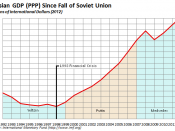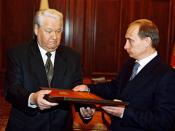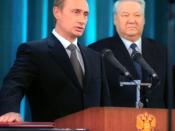In 1991, the Soviet Union fell. This led to the creation of the Russian Federation, a semi-presidential republic with a dual government. The President is the Head of State and has traditionally held the most power in Russia, while the Prime Minister is the Head of Government and has been the weaker of the two. However, Russia has traditionally been characterized as an illiberal democracy. When President Vladimir Putin became Prime Minister Vladimir Putin in 2008, democracy in Russia was threatened. Because of constitutional term limits, Putin was unable to run for a third term although he was popular. Instead, Putin named Dmitry Medvedev his successor and Putin gladly became Prime Minister. This change in power has been a source of concern for many countries around the world because in a country like Russia, the head has never been stable and Putin's love of power could be the downfall for the young federation.
This wiki will analyze how Putin came to be so powerful, the changes in the makeup of the government that Putin is creating and some claims of Putin to be the next dictator of Russia.
To begin, after the Russian Civil War in 1922, the Soviet Union was created. Vladimir Lenin was the first premier of the Soviet Union because he led the people to overthrow the provisional government. Lenin set up the Soviet state with the ideals of Karl Marx but his political ideology was considered Leninism. From the creation of the Soviet state, Russia was dominated by a one-party system with the Bolsheviks in control. Lenin adopted a new constitution in 1924, which created the Soviet Union to be based on the dictatorship of the proletariat and the promotion of the working class. Lenin also set up the New Economic Policy which aimed at...


